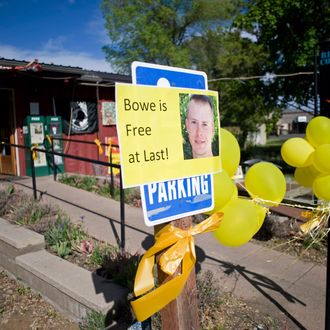
In February, New York Magazine published a story on the men and women who fled the wars in Iraq and Afghanistan — and mostly escaped punishment from the federal government. After the news of Bowe Bergdahl’s desertion and misbehavior in front of the enemy charges on Wednesday, Daily Intelligencer thought it would be smart to look back at what Wil Hylton’s reporting tells us about the life of AWOL soldiers, especially since most don’t receive massive amounts of national attention.
First of all, it’s exceptionally rare for the federal government to punish deserters in the 21st century.
At the height of the Iraq War, fewer than 5 percent of deserters received a court-martial, and fewer than one percent served prison time.
The Pentagon, in fact, makes little effort even to count missing troops. There is no comprehensive list of AWOL and desertion cases for the military, nor any unit responsible for keeping one. When I called the Office of Personnel and Readiness at the Pentagon to ask why this was so, a lieutenant commander named Nathan Christensen said that, by chance, his office had just recently compiled such a list, which was so complete that it counted even those who were missing for a few hours. But as soon as Christensen sent me the list, it was clear that his figures were drastically low. For example, Christensen listed the total number of missing troops in the American military in 2007 at 1,571. The Marines alone list twice as many missing in 2007, and the Army lists three times as many. Christensen’s total number of missing personnel between 2001 and 2012 was 14,650. The real figure, based on internal numbers from the Army, Navy, Air Force, and Marines, appears to be north of 50,000.
Hylton goes on to say that “the only deserters who have consistently been punished by the American military are those who went to Canada … it is difficult to avoid the conclusion that the military is making a special example of those who fled north and spoke out.” In other words, the only people punished for desertion are those who speak out publicly about it. Bergdahl may have not spoken out publicly about his reasons for walking off his base in Afghanistan, but he has become the most well-known soldier to go AWOL — and never had the choice to go quietly. Most AWOL soldiers also don’t have much of the legislative branch, and many members of the military, questioning their motives.
If convicted, 28-year-old Bergdahl could spend life in prison. And, as Hylton notes in his piece, “Once a deserter has been sentenced, life in military prison can be complicated by the hostility of guards and other inmates.”





























